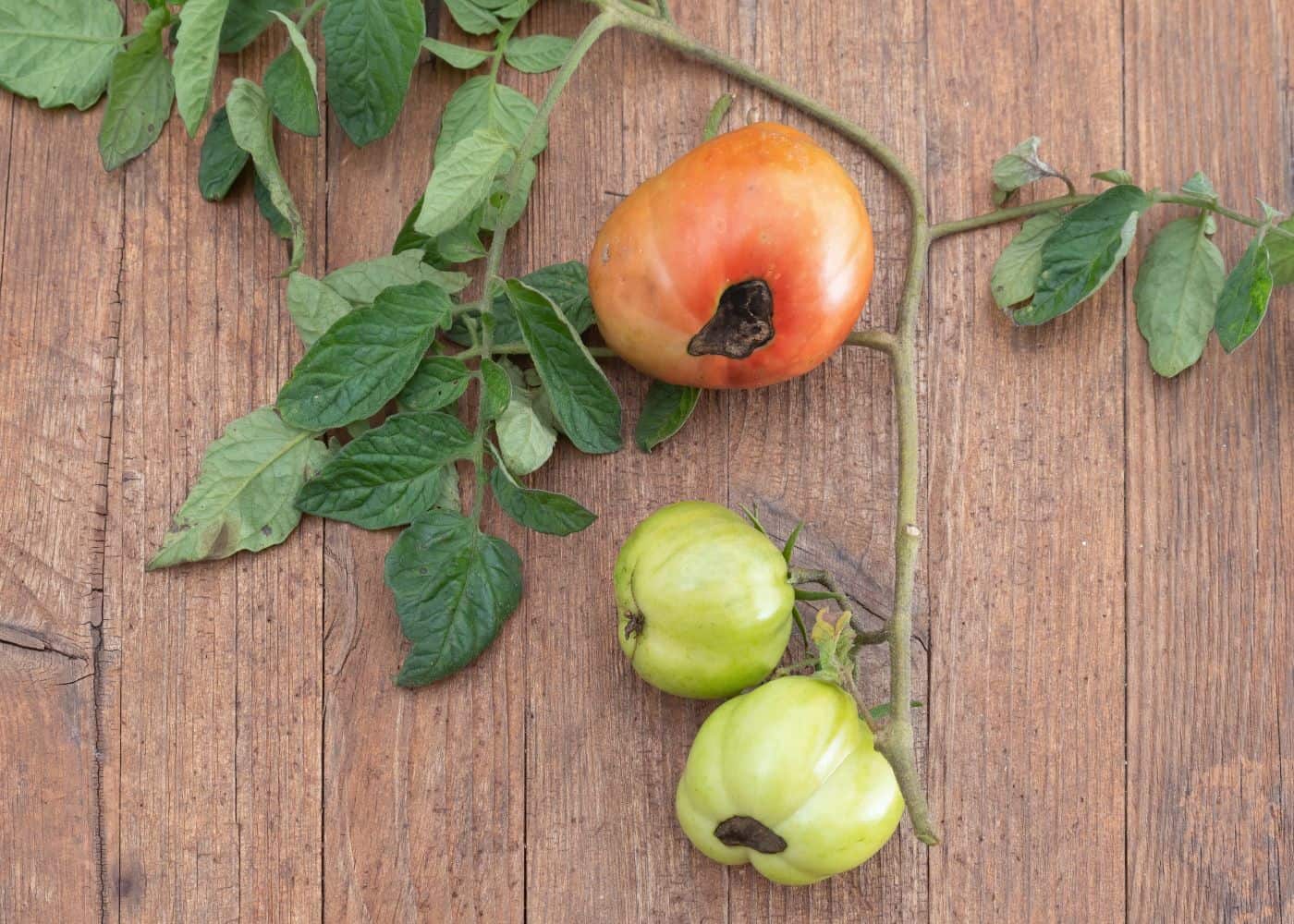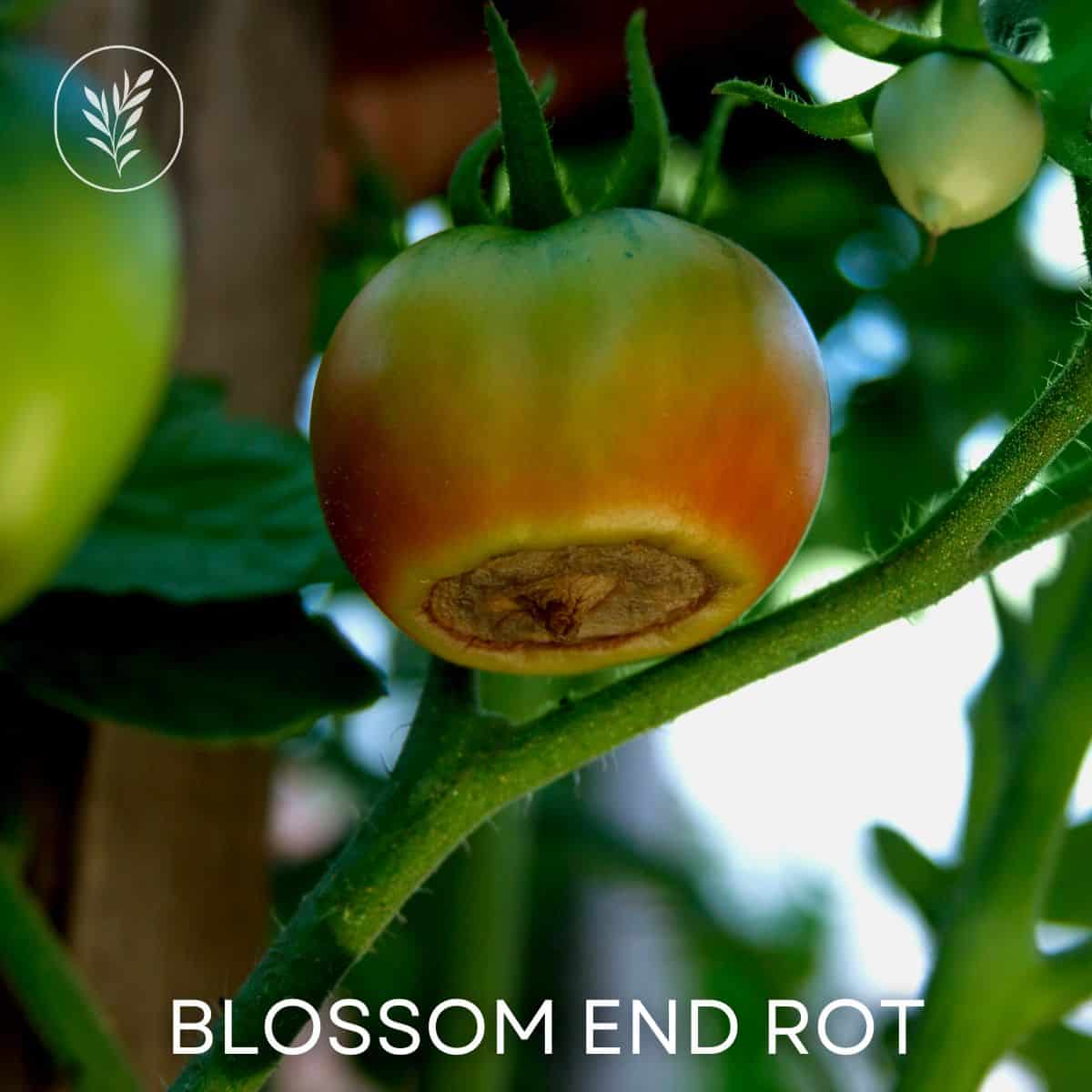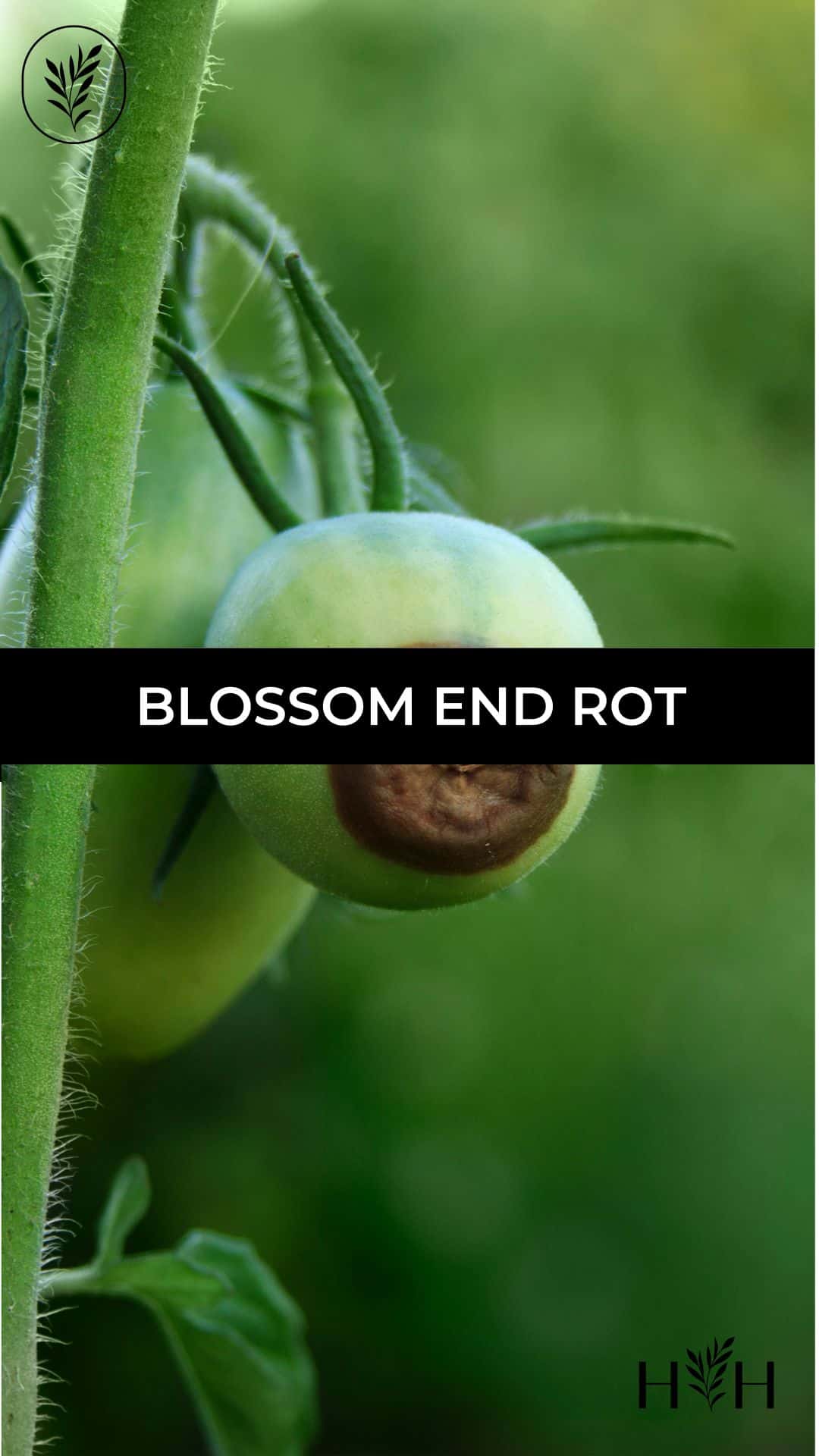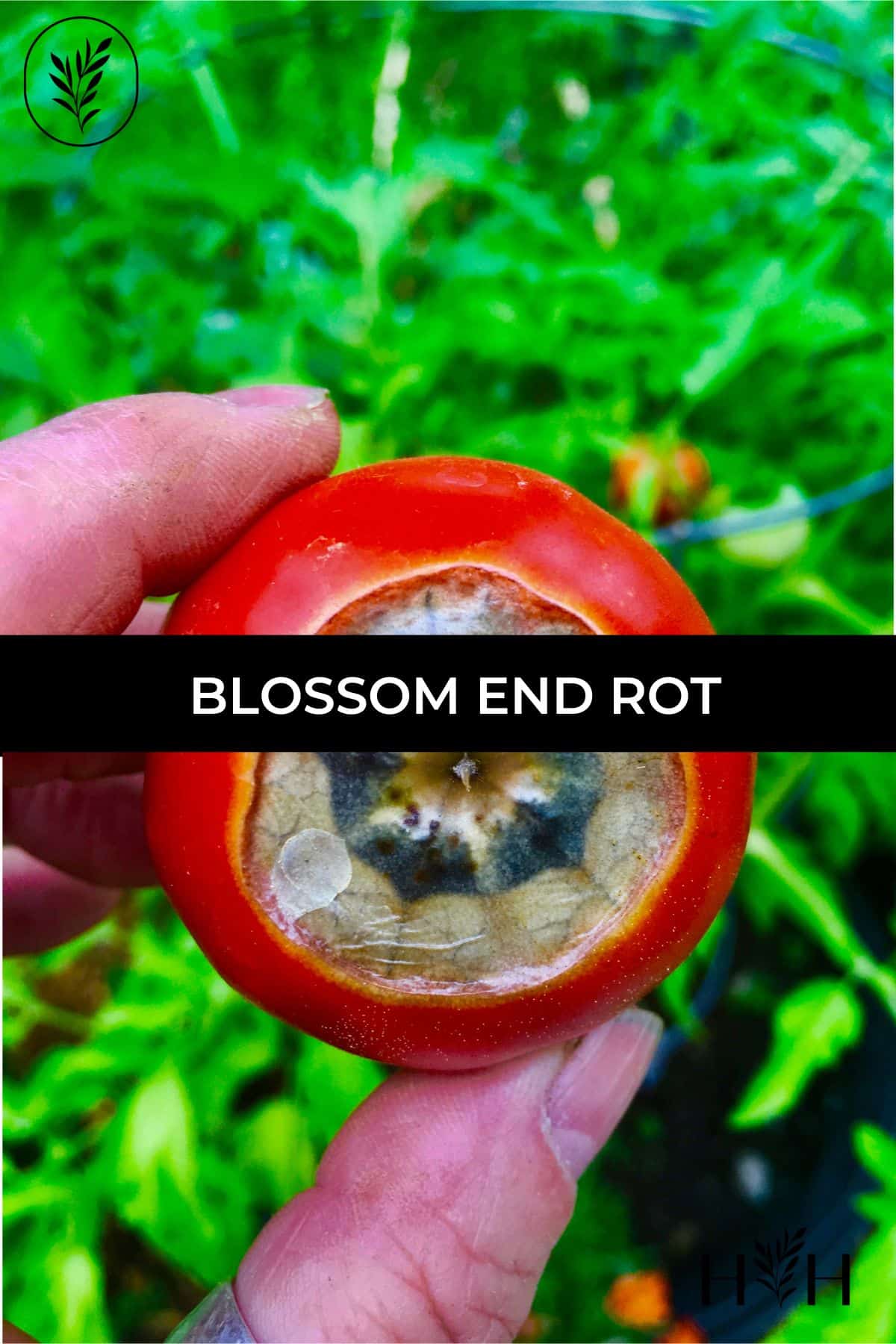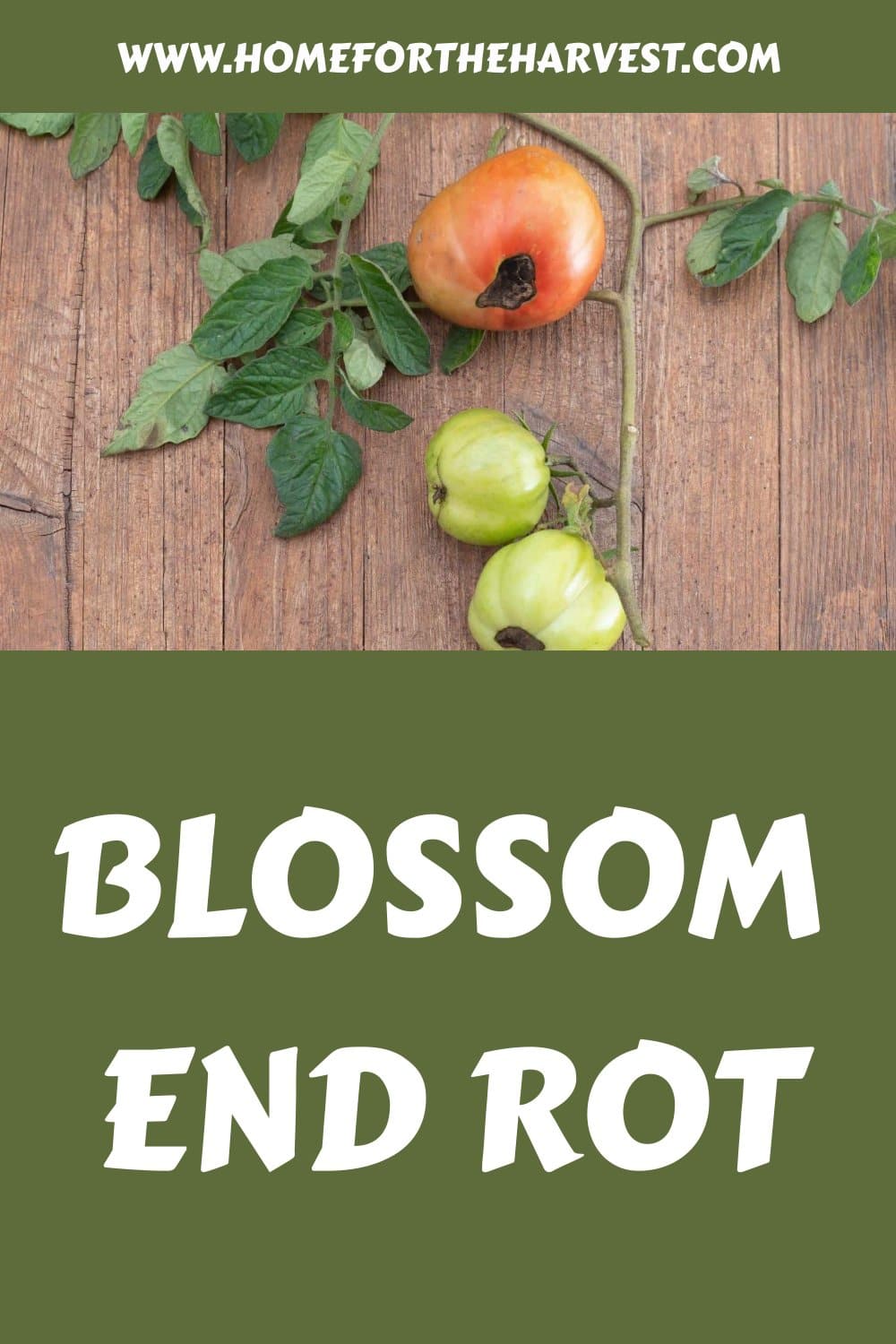As a gardener, I know how frustrating it can be to spend months tending to tomato plants only to find that the fruit is plagued by blossom end rot. This condition is a common problem and can be particularly frustrating for gardeners.
Blossom end rot is a condition that affects the bottom of the tomato fruit, causing it to soften, turn black, and rot away. It’s a common problem caused by a lack of calcium in the plant. Several things can contribute to this nutrient deficiency, including fluctuations in watering, extreme temperatures, poor soil, and too acidic or alkaline soil. And while you can’t reverse the damage, you can treat the deficiency.
You can do several things to prevent and treat this condition, including adjusting your watering schedule, adding calcium to the soil, and using a balanced fertilizer. With the right care and attention, you can keep your tomato plants healthy and free from blossom end rot, ensuring a bountiful harvest of delicious, healthy tomatoes.
What is blossom end rot?
As a tomato gardener, you may have heard of blossom end rot. It is a common problem that can cause significant damage to your tomato plants.
Blossom end rot is a physiological disorder affecting tomato plants’ fruit. It is characterized by a dark, sunken spot that appears on the blossom end of the fruit.
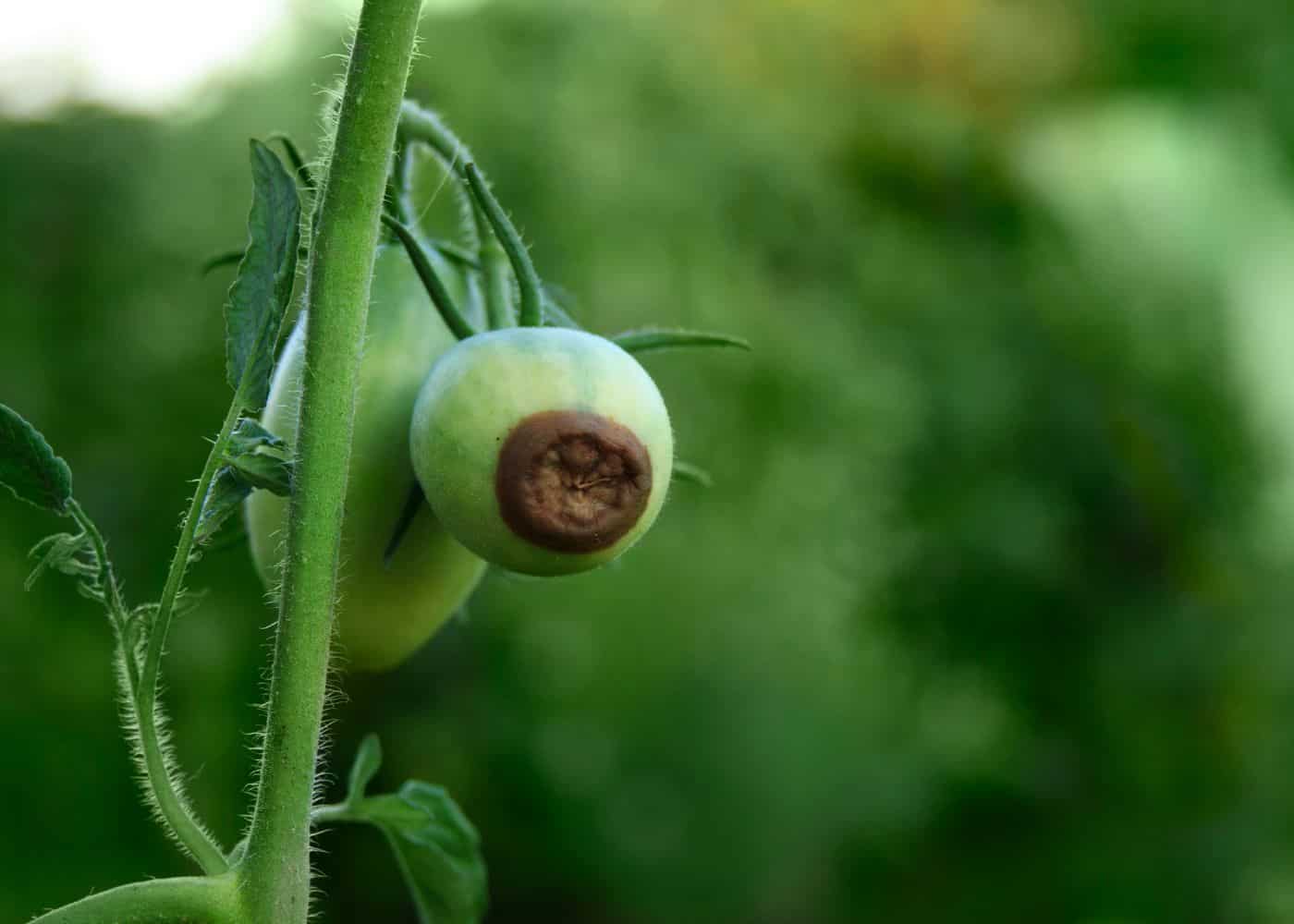
Symptoms of blossom end rot
The first sign of blossom end rot is a small, water-soaked pale spot on the blossom end of the fruit. As the spot grows, it becomes dark brown or black and sunken in appearance. The affected area may be small or cover most of the fruit. The fruit may also become misshapen or stop growing altogether.
Causes of blossom end rot
Blossom end rot is caused by a lack of calcium in the developing fruit. Calcium is necessary for proper cell wall development, and a deficiency can cause the cells to break down and die, leading to the characteristic dark spot.
Several factors can contribute to a lack of calcium in the fruit. One of the most common causes is irregular watering. When the soil is too dry, the roots cannot take up calcium from the soil. Conversely, when the soil is constantly wet, the roots may not be able to absorb the calcium efficiently.
Other factors that can contribute to blossom end rot include high temperatures, low humidity, and high soil nitrogen levels. The pH level of the soil can also affect nutrient availability, with plants growing in strongly acidic soil having a difficult time uptaking calcium. And lastly, the soil itself may be deficient in calcium.
It is important to note that blossom end rot is not caused by a disease or pest and is not contagious. The plants simply don’t have the calcium molecules they need to grow healthy fruit. Once you identify the problem, you can take steps to correct it and prevent it from happening again in the future.
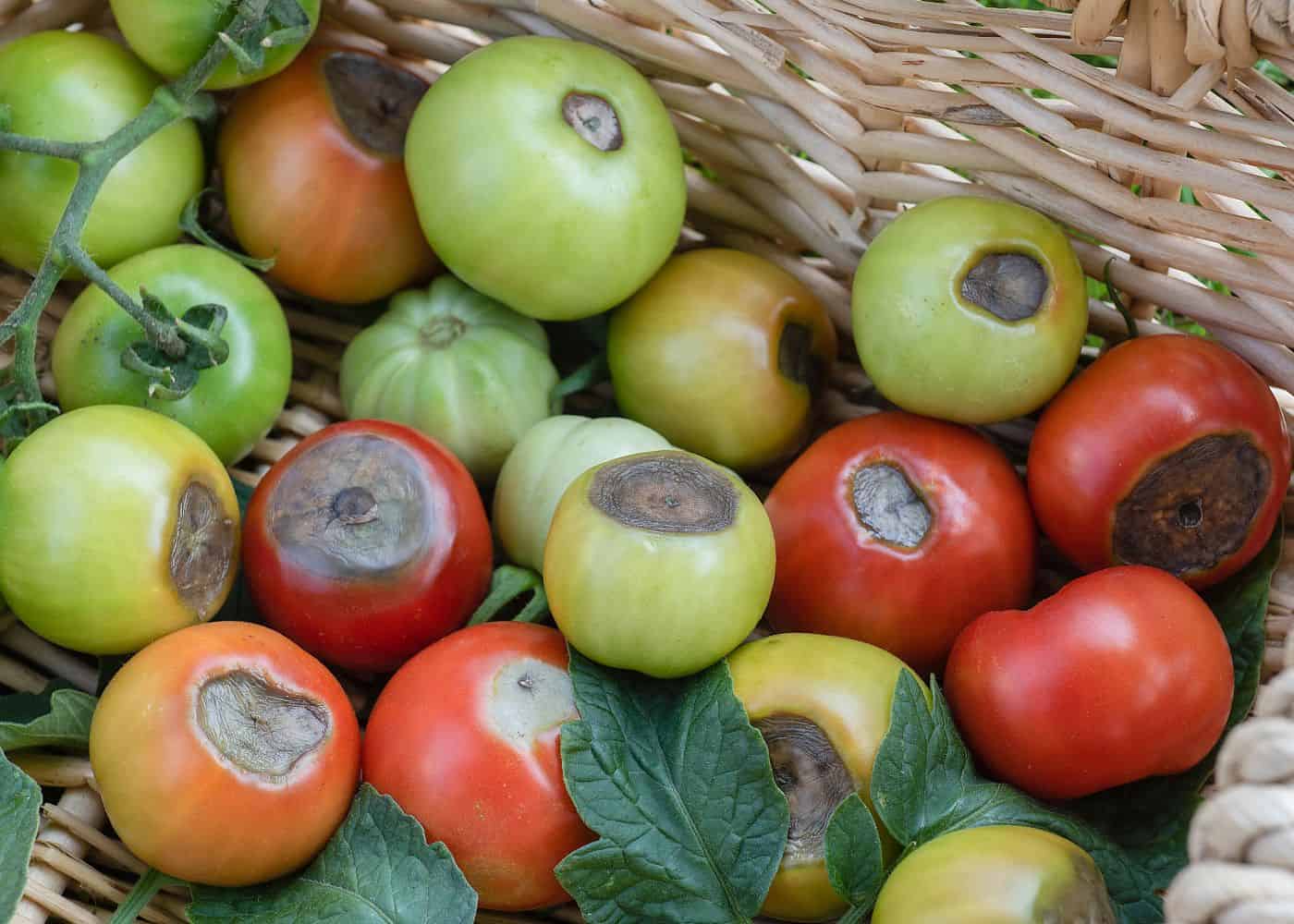
Prevention and treatment
While it’s best to prevent blossom end rot in the first place, you can also take reactive measures if you notice your first tomatoes have sunken spots on the bottom. You need to do whatever you can to ensure the plants can absorb lots of calcium as soon as possible. If you can correct the deficiency soon enough, the tomatoes that form afterward may not be affected by end rot.
Maintaining consistent soil moisture
I have found that maintaining consistent soil moisture is key in preventing blossom end rot in tomato plants. This means ensuring that the soil is neither too dry nor too wet. The best case scenario is for soil to be consistently moist like a wrung-out sponge but not muddy or completely saturated.
While you can withhold a little water while you harden off your seedlings, try to keep the moisture more consistent once the plants start to flower. Minerals like calcium enter the plant through the roots in a liquid solution with the water in the soil. If the plant isn’t absorbing water, it isn’t absorbing nutrients like calcium.
I recommend watering your tomato plants deeply and regularly, about twice a week, to ensure that the soil stays evenly moist. If your tomatoes are in raised beds, you may need to water every other day or even daily during hot weather. Avoid letting the soil dry out completely, as this can cause the tomato plants to become stressed and more susceptible to blossom end rot. Inconsistent watering can also cause mature fruits to split.
Calcium supplementation
Calcium is an important nutrient for tomato plants and can help prevent blossom end rot. I recommend adding calcium to your soil in the form of crushed eggshells. Sprinkle the calcium supplement around the base of the plant when you plant the seedling and work it into the soil.
You can also fertilize a growing tomato plant if you observe blossom end rot on the first fruits. Because minerals are absorbed in solution, a water-soluble formula will act more quickly than a slow-release granular solution. The most popular option is calcium nitrate fertilizer, which can be mixed into a watering can, injected into a drip irrigation line, or even sprayed onto the foliage of the plant.
pH management
Maintaining the proper pH level in your soil is important for preventing blossom end rot. I recommend testing your soil regularly and adjusting the pH level as needed. The ideal pH range for tomato plants is between 6.0 and 6.8. If your soil is too acidic, you can add lime to raise the pH level. If your soil is too alkaline, you can add sulfur to lower the pH level.
Fertilizer management
Proper fertilizer management is also important in preventing blossom end rot. Too much nitrogen can cause the tomato plants to grow too quickly and produce far more leaves than fruit. Adding specific nutrients all at once (like magnesium in the form of epsom salts) can also disrupt the balance of nutrients in the soil and what the plant absorbs. I also recommend avoiding over-fertilizing, as this can contribute to blossom end rot’s development.
Mulching you plant
Mulching around your tomato plants can help maintain consistent soil moisture and prevent the soil from drying out too quickly. I recommend using a layer of organic mulch, such as compost, straw, or shredded leaves, around the base of the plant. This can also help prevent weeds from growing and competing with the tomato plants for nutrients.
Overall, preventing and treating blossom end rot in tomato plants requires proper soil management and nutrient supplementation. By maintaining consistent soil moisture, adding calcium to the soil, managing the pH level, using proper fertilizer, and mulching around the plants, you can help prevent the development of blossom end rot and ensure a healthy tomato harvest.
Before you go…
After researching and analyzing the causes, symptoms, and treatments for blossom end rot in tomato plants, I have learned that this condition can be prevented and managed with proper care and attention.
Maintaining consistent watering and fertilization practices is important to avoid fluctuations in soil moisture and nutrient levels. Using a soil test kit can help determine the specific needs of your soil and guide your fertilization efforts. Additionally, incorporating organic matter into the soil can improve its structure and drainage, which can be beneficial for preventing blossom end rot.
Another key factor in preventing blossom end rot is ensuring that the plants have access to sufficient calcium. This can be achieved by adding calcium-rich amendments to the soil or by using a calcium foliar spray on the leaves of the plant.
Overall, gardeners can enjoy healthy and abundant tomato harvests by taking proactive steps to prevent and manage blossom end rot. With proper care and attention, tomato plants can thrive and produce delicious fruit for us to enjoy.


